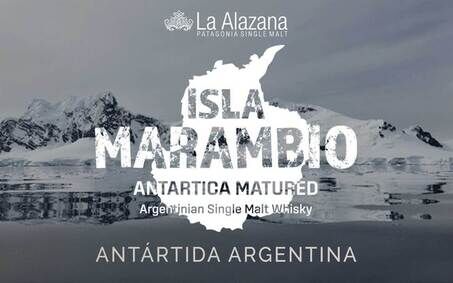
The World's first Antarctica matured whisky is underway!
Pushing the boundaries of whisky maturation to new extremes; The Isla Marambio project required the support of the Argentinian Ministry of Defence...
Read more
We have heard of the horror stories of corked wine, but can whisky also suffer a similar fate? In short, yes. There are pros and cons to using a natural cork to seal a bottle of whisky. Let’s look at a few of each:
A cork-topped bottle of wine or champagne is an image of elegance and sophistication. Cracking open a bottle of vintage Dom Perignon while guests mingle or the sound of the first uncorking of a bottle of Macallan single malt whisky in celebration with friends would not feel the same with anything other than a robust cork. It denotes quality and a romantic feel and instils that sense of history and culture with every sip. Although the idea of a 'corked whisky’ may invoke nightmares for many of us, the idea of a screw top or synthetic cork atop your favourite bottle of whisky is simply unimaginable.
The bark of the cork oak is what we call cork. Native to the Western Mediterranean Basin, cork oak forests are a vital addition to the lungs of the planet. They are estimated to retain up to 14 million tons of carbon dioxide a year and give a home to 135 plant species and over 200 animal species - including 160 bird species, 37 mammal species and 24 species of reptiles and amphibians.
The evergreen tree grows in temperate and subtropical regions of the Northern Hemisphere, including France, Spain, Italy, Morocco, Tunisia & Algiers. Over 2.2 million hectares of cork forest cover the world, with approximately 720,000 hectares situated in Portugal, where it is the national tree.
Cork oak trees are not cut down in pursuit of the raw material, rather cork is harvested via the sustainable practice of ‘stripping’. An ancient process of extracting the bark from the cork oak, the delicate operation takes place between May and August. The first stripping is harvested when the tree is 25 years old and the trunk has grown to a diameter of 70 centimetres, with stripping completed in nine-year intervals thereafter.
These first two harvest strippings of virgin and secondary cork are used as a raw source of material for a wide array of diverse industries, with only the third stripping, amadia, having the ideal characteristics for the production of cork stoppers. The cork oak also benefits from being the only tree whose bark regenerates, giving it a smoother texture after each harvest.
The Oak Tree has an average lifespan of over 200 years, allowing the practice of harvesting for up to 150 years. Natural, versatile and sustainable, cork is a highly lucrative and sought-after natural resource for companies such as Corticeira Amorim.
Founded in 1870, with the foundation of António Alves Amorim's manual cork stopper factory, on the Quay in Vila Nova de Gaia, Coriceira Amorim was an early adopter of cork. Recognising and harnessing the innate potential of cork Corticeira Amorim underwent unprecedented investments in research and development, innovation and design since its early inception. In 1908 the cork stopper was seen as an increasingly luxurious item, and by 1935 Corticeira Amorim had become the world's largest cork producer. Fast forward to the present day, and Corticeira Amorim is still the biggest cork processing group.
Corticeira Amorim is a company built with an emphasis on sustainability (In 2020, the year of their 150th anniversary, they reinforced their commitment to sustainability), aiming to add to the value of cork in a competitive, distinctive and innovative way in harmony with the natural world.
In 2022 Corticeira Amorim released their new Neutrocork Xpür stopper, an inherently sustainable resource making a positive impact on the decarbonisation of the wine industry, contributing to mitigating climate change. The Xpür system cleanses cork using less energy, allowing the removal of TCA and other sensory-deviation molecules that may exist in the granules without compromising the natural properties of cork. The company also launched their Naturity range, the world's greenest and most effective anti-TCA technology for cork stoppers. Utilising a process that combines pressure, temperature, purified water and time, Naturity separates TCA molecules from a cork's cellular structure, once again keeping focusing on keeping the crucial features of this unique material intact.
Their commitment to creativity and excellence has seen them infiltrate the worlds of architecture, construction, energy, mobility, sports and even aerospace. Most recently the company teamed up with Italian fashion house Gucci, British goldsmith Grant Macdonald and the Italian-Ethiopian artist Red Longo (RED) to conceive, design and produce the Golden Vines 2022 trophy.
At Cask World, we also emphasize our relationship with the environment. It is an essential criteria in our Cask World Standard for all our official partners. Corticeira Amorims sustainable practices and constant innovation bode well for their future and the future of our planet. The company is a shining example of an exuberant enterprise building a successful commodity with forward thought for our ecosystem. This business culture will allow them to continue being market leaders for many years and leading innovation within the exciting world of cork.